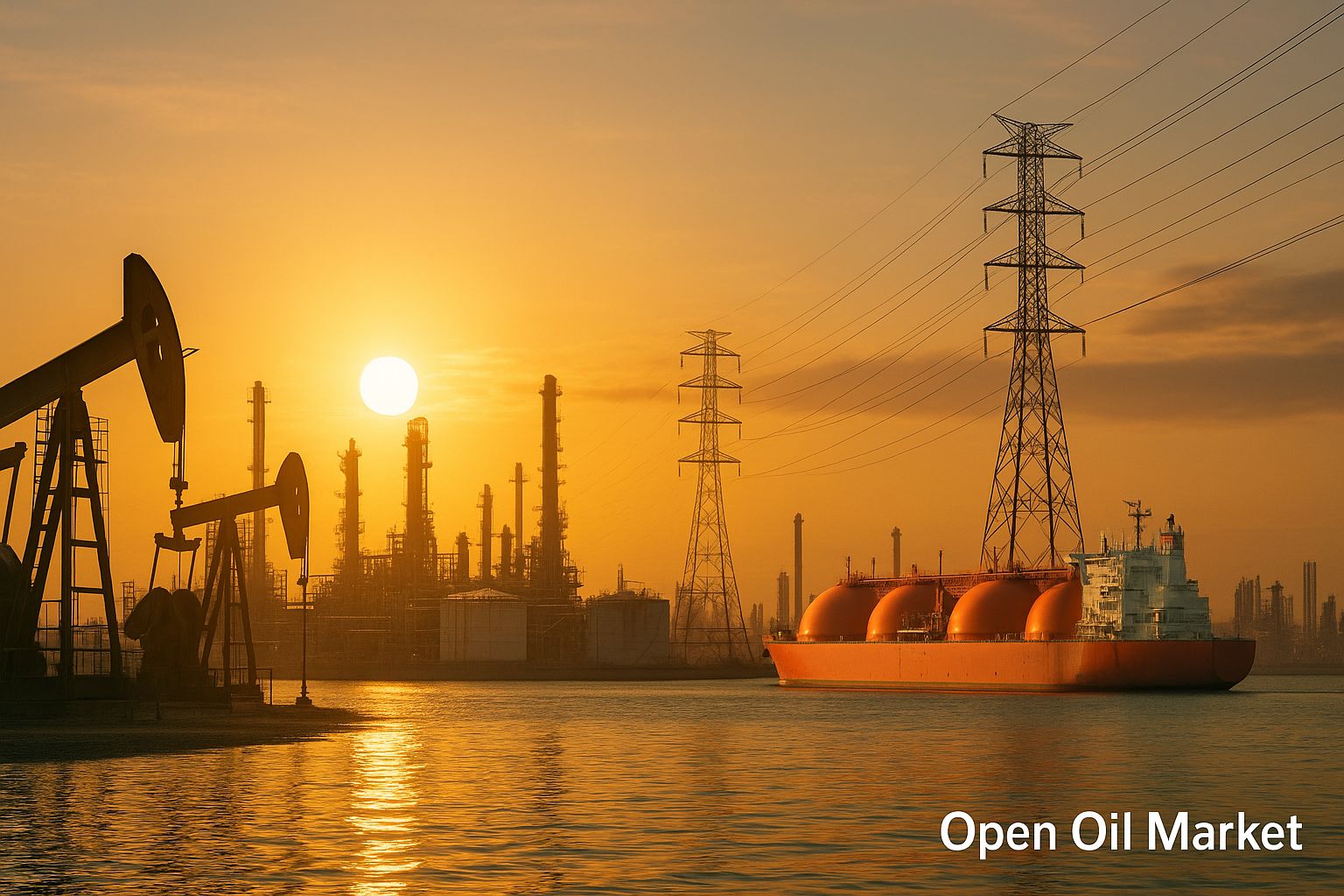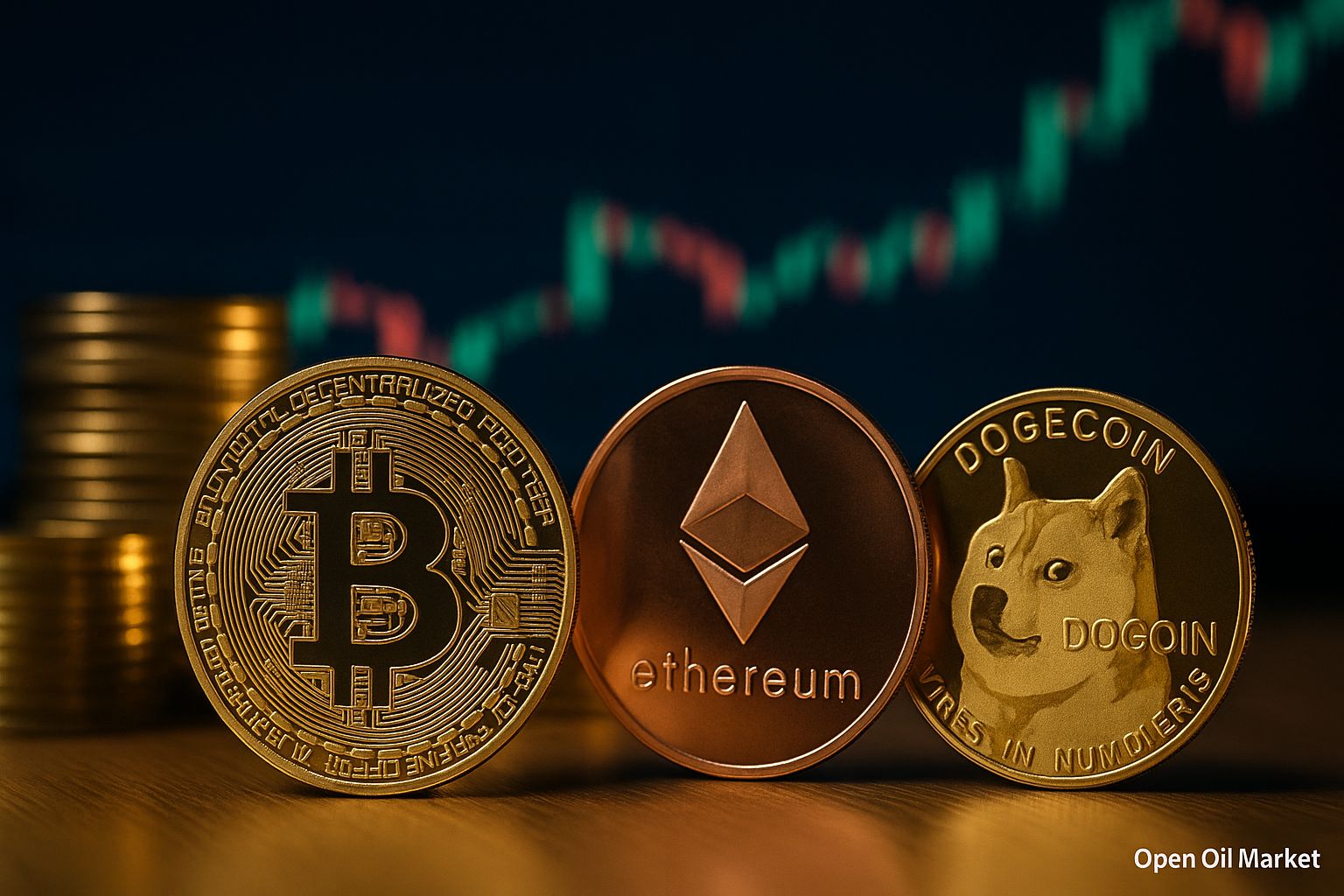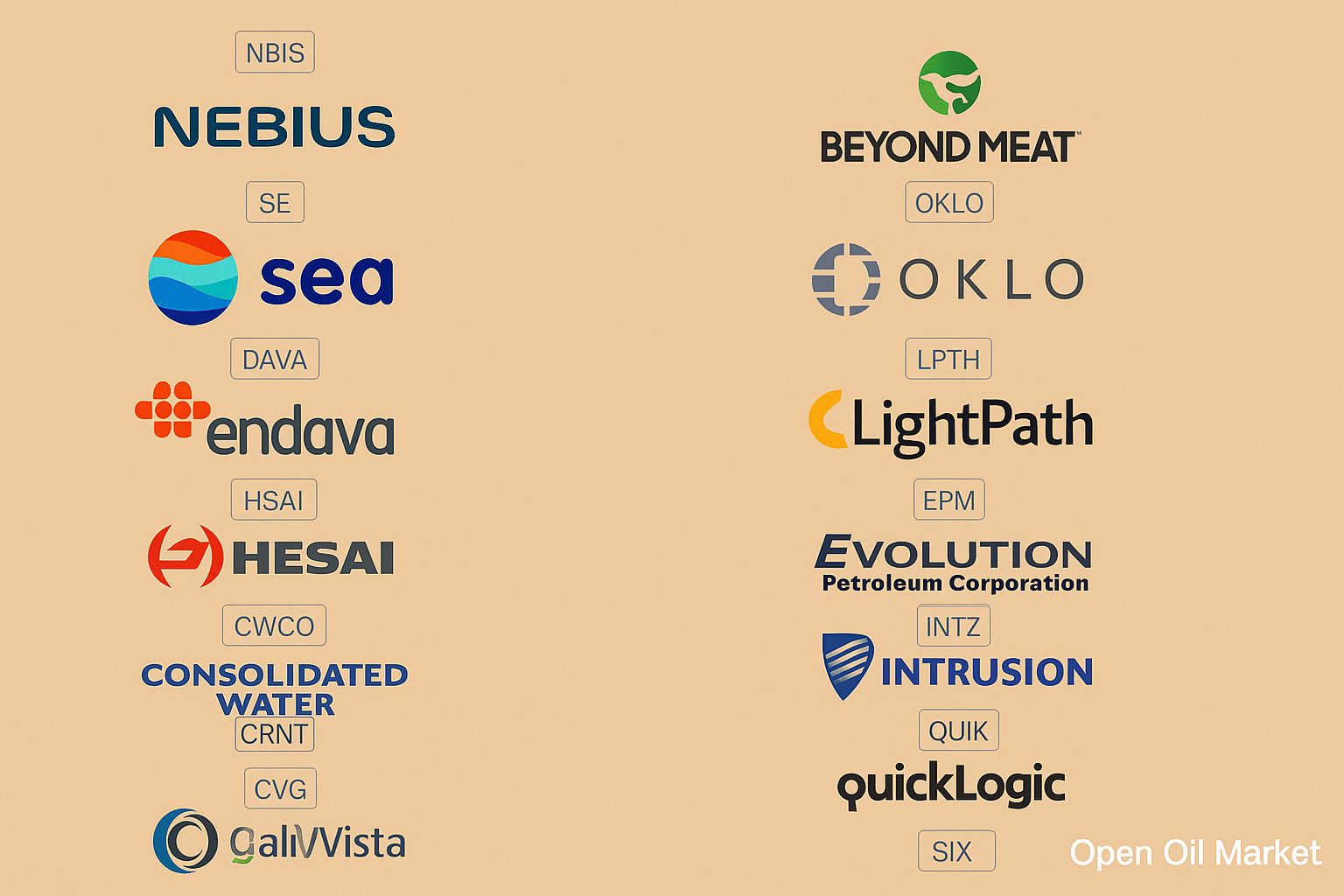
Current News of the Fuel and Energy Complex as of 2 November 2025: Oil and Gas Prices, Trends in Renewable Energy, Geopolitical Risks, and Forecasts for the Energy Market
The current events in the fuel and energy complex as of 2 November 2025 occur against a backdrop of sustained geopolitical tension and notable positive signals in the markets. The sanctions confrontation between Russia and the West remains severe: the USA has introduced new restrictions against the subsidiaries of Rosneft and LUKOIL, with an extension deadline until the end of November, while the European Union is expanding its embargo on Russian LNG. However, optimism in global markets is fuelled by a trade 'truce' between the USA and China, which has improved forecasts for global demand for energy resources. Alongside moderately high industrial activity, these factors provide additional support for raw material prices.
Commodity markets are demonstrating relative stability. Oil prices, after falling to recent lows, are returning to a moderate range: Brent crude is trading at around $64–66 per barrel, while WTI is around $60–62. The balance between supply and demand remains fragile, but excess supply is capping price growth. The gas market is entering winter with record fuel reserves: European underground storage facilities are over 90% full, which has reduced spot prices to a comfortable ~€30 per MWh. Overall, the global fuel and energy complex is evolving under the influence of diverging trends: on one hand, a persistent surplus of hydrocarbons, and on the other, an increase in investments in renewable sources and energy efficiency.
The global energy transition is gaining momentum: many countries are recording records in building solar and wind facilities, and the share of renewable energy in electricity generation is continuously rising. At the same time, traditional sector technologies remain of key importance for energy supply reliability. In Russia, following the recent fuel crisis, measures are being implemented to stabilise the domestic market: gasoline and diesel production has been restored to pre-crisis levels, wholesale prices are declining, and there are currently no issues with fuel supply to petrol stations. Below is a detailed overview of the key segments of the fuel and energy complex, including oil, gas, electricity, coal, oil refining, and the fuel market, as well as the main geopolitical and market trends.
Oil Market: Surplus Balance and Ongoing Risks
Global oil prices remain under pressure from fundamental factors, despite occasional spikes. After the autumn decline, Brent prices have stabilised around $64–66 per barrel (below earlier levels). The market continues to operate under a scenario of supply surplus by the end of 2025. This is supported by the following trends:
- Increase in Production Amid Decreasing Demand. OPEC+ countries are gradually increasing quotas: in November, the alliance officially allowed an additional production of approximately +137 thousand barrels per day. The USA and several other producers (including Brazil and Kazakhstan) have reached record output levels. Meanwhile, global demand growth is slowing down: the IEA forecasts an increase of approximately +0.7 million barrels per day in 2025 (down from +2 million in 2023), which is leading to stockpiling.
- Trade Truce: The USA-China agreement reduces geopolitical risks and stimulates expectations for demand growth. This provides short-term support to oil prices and may mitigate some of the negative factors associated with overproduction.
- Energy Savings and Innovations: Measures to reduce emissions and the spread of electric vehicles are limiting fuel consumption growth. The transition of the vehicle fleet to EVs and improvements in energy efficiency in industry are expected to slow down oil demand growth in the long term.
- Sanction and Geopolitical Risks: New USA restrictions against Rosneft and LUKOIL are increasing the uncertainty regarding Russian oil exports (a deadline of 21 November has been set for halting transactions). However, actual trading has continued under previous month’s contracts: oil flows to Asia (India, Turkey) are still being maintained through intermediaries. Any further tightening of sanctions or unforeseen incidents at oilfields could abruptly change market balance.
Gas Market: High Reserves and Supply Diversification
The situation in the gas market is favourable for consumers, particularly in Europe. By the start of the heating season, EU underground storage facilities are filled to over 90%, causing spot gas prices to drop to around €25–30 per MWh (significantly lower than the crisis peaks of 2022). The influence of traditional suppliers from Russia and Algeria remains limited, and Europe is strengthening diversification through LNG.
- Record European Reserves: The EU has deliberately restrained gas withdrawal during the summer and autumn, pushing the filling level of underground storage. The planned target of 90% by 1 November has already been exceeded, providing confidence to consumers ahead of the cold weather.
- Growth of LNG Supplies: Despite sanctions, the USA is increasing LNG exports to Europe and Asia. According to forecasts, by 2026–2029, around 70% of European LNG will come from the USA (up from 58% currently). The USA is constructing new terminals to compensate for the decline in Russian and Algerian flows.
- Reduction of Russian Share: The European Union has planned to completely stop importing Russian gas from January 2026 (considering transitional contracts until 2028) and will impose an embargo on Russian LNG from 2027. Meanwhile, Russia continues to supply according to existing contracts, but new deals are complicated due to European restrictions.
- Price Volatility: With high storage capacity, the European market is less vulnerable to fluctuations, but strong frosts could again increase demand and prices. Asian demand for gas remains moderate (decline in Chinese purchases in 2025), which alleviates the risk of shortages.
Electric Power and Renewable Energy: Investment Boom and System Stability
The global electricity sector continues to undergo dynamic changes driven by the energy transition. Renewable sources are becoming an increasingly prominent factor, but major economies continue to ensure network reliability through traditional resources and energy storage systems.
- Record Investments in Renewable Energy: In 2025, record capacities of solar and wind power stations are being commissioned. IEA analysts predict that solar panels will contribute up to 80% of global generating capacity growth by 2030. In several regions (Europe, North America, China), the share of renewable energy in the overall energy balance has exceeded 30%.
- Growth in Electricity Demand: Global electricity consumption is growing at an accelerated pace (approximately +2–3% per year), largely driven by the development of data centres, AI, and transport electrification. This is spurring investments in new hydropower stations, nuclear power stations, gas thermal power plants, and, of course, in networks and energy storage to smooth peaks.
- Integration and Reliability: The rapid growth of renewable capacities necessitates the upgrading of power grids. The IEA and WEF note the need for significant investments in smart grids and storage (batteries, pumped storage hydroelectricity) to ensure system flexibility and prevent outages amid variable generation.
- Government Programs: Many countries are strengthening their 'green transformation' policies: target levels for renewable energy are being established and mechanisms are being introduced to support producers of 'clean' electricity. This creates a favourable environment for energy companies focused on investing in renewable technology.
Coal Industry: Demand in Asia and Gradual Phase-Out in the West
The coal sector worldwide is demonstrating mixed dynamics. On one hand, global coal prices have risen in recent weeks—by the end of October, prices reached ~ $109 per tonne (a two-month high). On the other hand, annual prices continue to be significantly below last year's levels. Key changes are related to Asia and the regulatory environment.
- Price Stabilisation: Under pressure from Asian demand, coal prices have increased by ~3–4% over the last month (to ~$108–110/ton). Nevertheless, prices are still ~20–25% lower than October 2024 levels. China and India are gradually reducing purchases in the context of a saturated market but plan for peak demand around 2030 in the long term.
- Asian Demand: China, India, Japan, and Korea continue to be the largest buyers of coal. Even with the growth of renewable energy's share in the energy balance, these countries maintain significant coal generation to ensure grid stability. In contrast, Europe and the USA are reducing consumption: closures of coal-fired power plants and transitions to gas and renewables are decreasing coal's share in Western energy production.
- Investment Trends: China has stated it will continue investing in coal energy in the foreseeable future. Western governments, meanwhile, are encouraging the phase-out of coal-fired power plants (some of the largest thermal power stations in the USA and Europe plan to close ahead of schedule). This creates a 'two-speed' market dynamic.
Oil Refining and Fuel Market: Recovery from the Crisis
The petroleum products market remains balanced. Globally, oil refineries are operating at high capacity, meeting autumn demand for gasoline and diesel fuel. In Europe and Asia, a surplus fuel balance is developing, while Russia has fully restored domestic production following the summer of 2025 (Results of the Summer Fuel Crisis in Russia).
- Russian Fuel Market: After the October shortage, the Russian government imposed strict export controls and supported refineries, allowing for increased gasoline and diesel production. As a result, local shortages have been eliminated, wholesale fuel prices have fallen from their peak, and petrol stations are adequately supplied before winter.
- Global Demand Trends: In developed countries, a moderate increase in gasoline consumption is observed (due to economic recovery and tourism), but industrial demand for oil products is being restrained by the development of alternative fuels. In aviation, investment in sustainable aviation fuels (SAF) is increasing, and in road transport, investment is growing in electric and hybrid vehicles.
- Refinery Modernisation: As environmental regulations tighten, refineries are adapting production. In Europe, refineries are increasing the proportion of low-octane and bio-blends, while in Asia, facilities are being modernised to reduce sulphur emissions. This confirms the trend towards 'cleaner' oil products and the transition to new types of fuels.
- Fuel Prices: Exchange quotes for gasoline and diesel remain within a moderate range: in Europe, ultra-light gasoline costs about $800–820 per tonne, and diesel fuel is around $780–800 per tonne, which is closer to mid-2025 levels. Domestic fuel prices in Russia have stabilised below the peaks of 2022-23, thanks to government measures.
Sanctions and Geopolitics: New Restrictions and Workarounds
Political factors continue to have a significant impact on the fuel and energy complex. In late October, the USA and the European Union introduced further packages of sanctions against Russia, targeting the oil and gas sector and financial structures. This provokes a realignment of supply chains and forces buyers to seek alternatives.
- USA Against Rosneft and LUKOIL: The administration has imposed sanctions against the subsidiaries of the two largest Russian oil companies. They have been given a few more weeks to wind down transactions (the final deadline is 21 November), which is causing difficulties with banking operations and payments. Meanwhile, Russia is focusing on mitigating currency risks.
- EU and Russian LNG: The 19th package of EU sanctions includes a ban on purchasing Russian LNG from April 2026 (for short-term contracts) and from January 2027 (for long-term contracts). The EU is also expanding the list of technologies and financing banned for export related to the Russian fuel and energy complex. Moscow's response has been to introduce countermeasures and diversify oil and gas supplies through friendly countries.
- Trade Flows: Under pressure from sanctions, the largest buyers of Russian oil (India, China, Turkey) are increasing purchases through trading firms and mixed transactions, trying to bypass restrictions. Europe is intensifying its purchases of oil and gas from alternative sources (USA, Middle East, Kazakhstan, Azerbaijan), while Russia is developing connections with southern routes, including through Black Sea ports.
- Impact on Markets: The risk of new sanctions and geopolitical conflicts currently remains one of the main drivers of short-term price volatility. However, these risks simultaneously prevent a deep decline in prices, as participants await clarification on contract statuses and an assessment of the impact of new restrictions.
Forecasts and Perspectives for the Fuel and Energy Complex
By the end of 2025, the fuel and energy sector will adapt to the new realities of the market and geopolitics. In the coming weeks, the following trends are expected:
- OPEC+ and Oil Supply: At the meeting on 2 November, OPEC+ will again review quotas and analysts predict that it may increase production by another ~137 thousand barrels per day (December quotas). This will support the trend towards gradual supply recovery that began in October.
- Demand for Energy Resources: International agencies expect moderate growth in oil and gas demand in 2026. The global economy is recovering from last year's shocks, but excess supply and the development of alternative energy will limit sharp price rises.
- Energy Transition: The investment boom in renewable energy will continue. Long-term goals for emissions reduction and technological innovations (such as hydrogen projects and battery technologies) will be priorities for funds and governments, while traditional sources will remain the cornerstone of the balance.
- Energy Security and Climate: High storage capacity and supply diversification provide resilience to energy consumption during winter. However, sharp climate fluctuations (an abnormally cold winter) or unforeseen disruptions could temporarily change the situation. Countries continue to build strategic reserves and improve energy networks to avoid crises.




